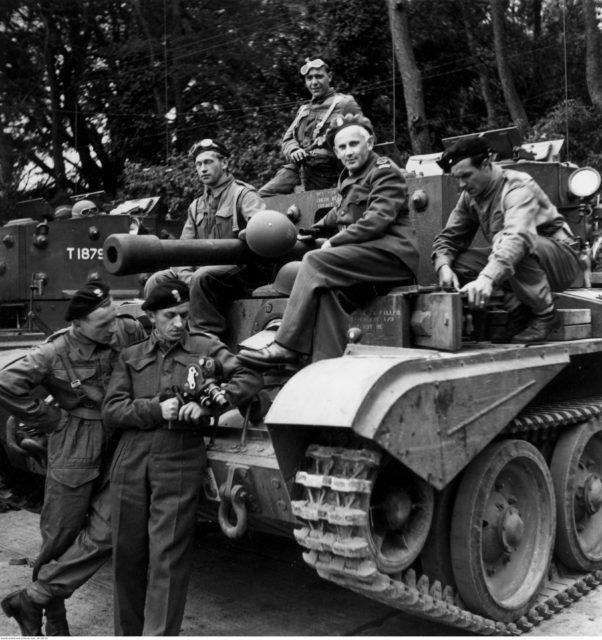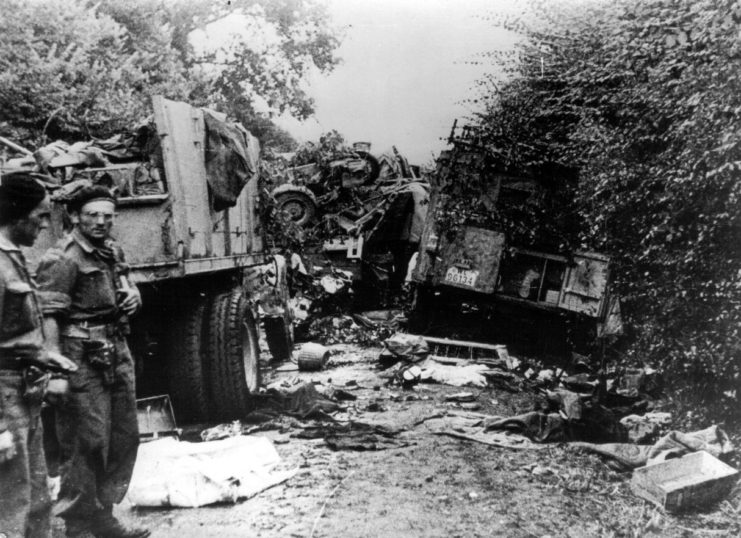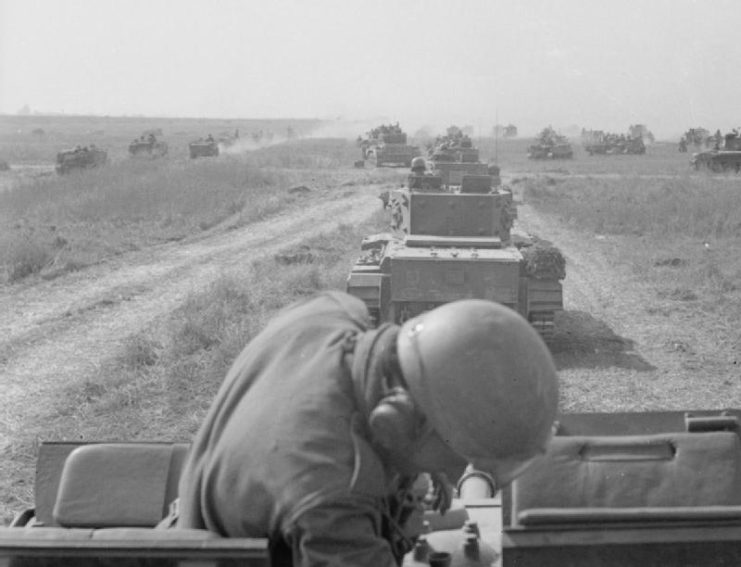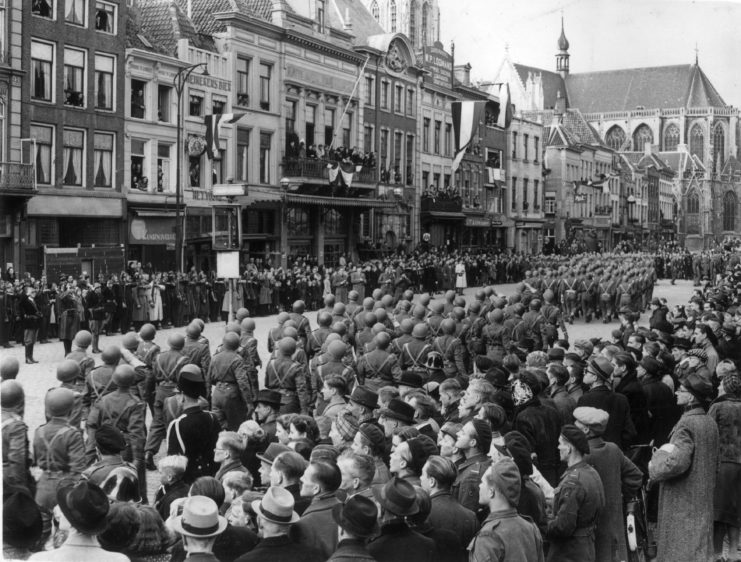The Polish 1st Armoured Division Served As the ‘Cork’ of the Falaise Pocket
Nicknamed the “Black Devils” by the German military, the Polish 1st Armoured Division was created in the middle of the Second World War. Working with the Allied Forces, they distinguished themselves as powerful members of the war effort. Although they were eventually disbanded, the division’s impact on the outcome of the conflict has never been forgotten.
The Polish 1st Armoured Division’s beginnings in Scotland

Following the fall of Poland in 1939, thousands of soldiers escaped to Hungary, before being forced into France by the Germans’ westward advance. When Germany took control of France, these same troops sought refuge in the United Kingdom. Commander-in-Chief of the Polish Armed Forces Gen. Władysław Sikorski was eager to establish the Polish I Corps in Great Britain and began lobbying for its creation in November 1941.
It wasn’t until February 1942 that the Polish 1st Armoured Division came to fruition. Based in Scotland, the division encompassed the 10th Armoured Cavalry and 3rd Infantry Brigades, commanded by Maj. Gen. Stanisław Maczek. The division was seriously undermanned and under-equipped when first formed, but the soldiers who made up the force were some of the most experienced in Britain at the time.
While stationed in Scotland, the Polish I Corps guarded the British coast. They initially trained with Crusader tanks, but switched to M4 Shermans and Cromwells upon transferring to the south of England in the summer of 1943. During this time, membership steadily grew, with 15,210 soldiers, 885 officers and 381 tanks making up the division by July 1944.
The amount of soldiers later peaked at around 18,000.
Operation Totalize

With more sufficient numbers, the Polish 1st Armoured Division was transferred to Normandy and assigned to the 21st Army Group of the First Canadian Army. They were tasked with aiding in Operation Totalize, joining the combat portion of the offensive on August 8, 1944.
The mission intended to push through the German defenses in the south and cut the 7th Army off west of the Seine. This would be achieved in two phases. In the first half, the Canadians would push the Germans down the Caen-Falaise Road, while the Polish 1st Armoured Division occupied the right side of the road and cleared villages in the second portion of the operation.
The Polish soldiers suffered 44 casualties from friendly fire by US-flown Boeing B-17 Flying Fortresses, but continued to press on. Stanisław Maczek opened the assault with the 10th Armoured Cavalry Brigade, with support from the 3rd Infantry Brigade on the left flank. When the Germans launched a counterattack, he strategically switched out different elements, to ensure one unit didn’t suffer too many losses.
Serving as the cork in the ‘Falaise Pocket’

As the Germans fought back, an opportunity presented itself to the Allies. With the Canadians pushing south, the Americans began their push north, ultimately lining up with the former. This trapped the German 7th Army, with the Polish 1st Armoured Division acting as “the cork of the bottle” that surrounded the remainder of the enemy troops and prevented their escape.
This was called the Falaise Pocket, and it began on August 12, 1944.
After the Canadian and American forces took their positions, the division closed the pocket on August 19. Unfortunately, they took the brunt of the Germans’ desperate counterattack, with 446 soldiers killed, 1,501 wounded and 150 deemed missing in action (MIA). Despite this, they managed to capture 3,500 prisoners of war (POWs). They also secured or destroyed 55 tanks.
The Polish 1st Armoured Division fought throughout Europe

Once they’d completed their work in Normandy, the Polish 1st Armoured Division followed the Germans to Belgium. There, they helped liberate a number of towns, including Ypres, Saint-Omer, Oostnieuwkerke, Ghent, Ruiselede, Roeselare and Tielt. After this, they moved to the Netherlands and aided in the liberation of the eastern parts of Drenthe and Groningen.
By April 1945, the division was fighting in Germany. They entered Emsland, and by early May had captured the Kriegsmarine base at Wilhelmshaven. There, the German commanders capitulated.
More from us: Two Aircraft Carriers Were Stationed In the Great Lakes During WWII
Following the close of the Second World War, the Polish 1st Armoured Division remained in Germany for occupational duties, before being disbanded in 1947. Over the course of the conflict, they lost a total of 975 soldiers. Following the disbandment, the soldiers had the option to return to Poland. By this time, however, the country had fallen under Soviet control, leading many to opt to remain in exile in other parts of Europe.
The post The Polish 1st Armoured Division Served As the ‘Cork’ of the Falaise Pocket appeared first on warhistoryonline.
The Polish 1st Armoured Division Served As the ‘Cork’ of the Falaise Pocket
Philippines Truth
Post a Comment
0 Comments